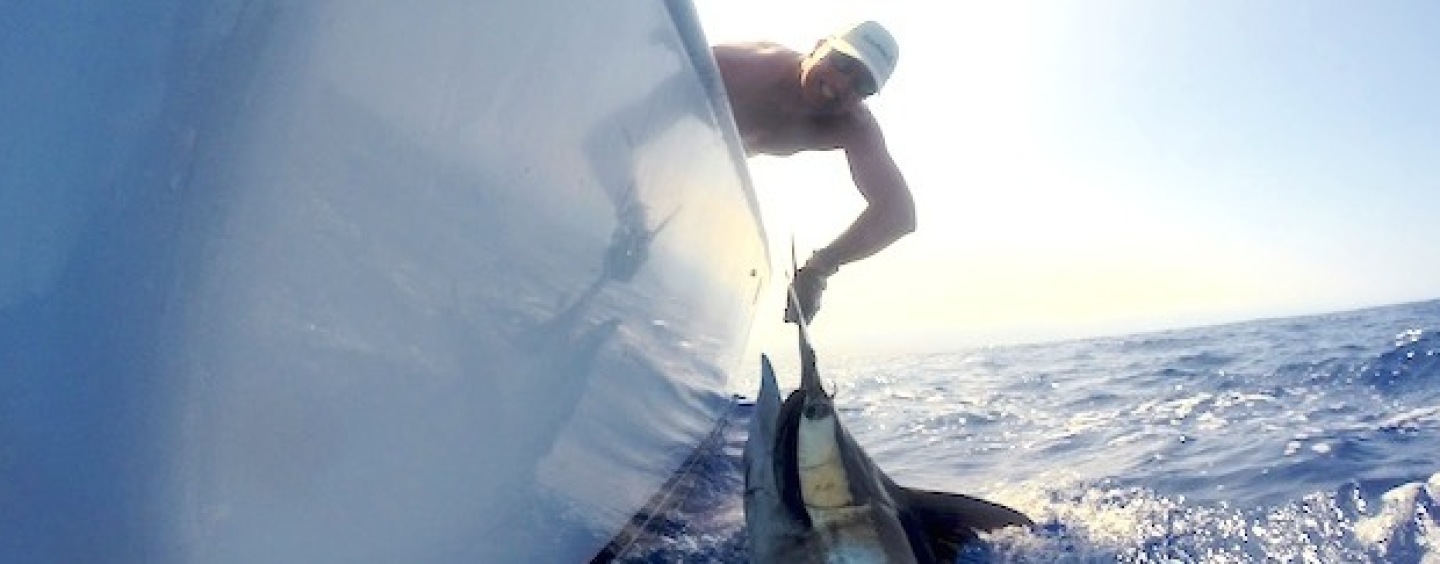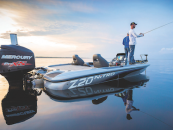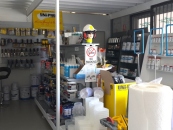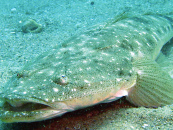The Gold Coast is the tourism mecca of Australia seeing hundreds of thousands of people a year visiting from all over the world. A vast majority of these visitors not only come for the weather, but also for our world-renowned fishing all year round. The waterways of the Gold Coast gives anglers and boating enthusiasts such an assortment of options, from the southern end of Moreton Bay to the New South Wales border.
The cooler months (APRIL-SEPTEMBER)
During the cooler months of the year, the seas are often calm enough to head out to the reefs for a catch of snapper and monster cobia. The shallow reefs just off Surfers Paradise offer some of the best cobia fishing ever experienced. Massive fish regularly exceeding the forty-kilogram mark are targeted by anglers using large live tailor, slimey mackerel and other baits found schooling up around the pinnacles beneath. Quality eating fish, such as snapper and pearl perch, are also a favourite catch targeted by anglers during this season. A few charter boats are all geared up for this style fishing and offer anglers and tourists the opportunity to experience the thrill of catching that fish of a lifetime.
With the cool water temperature in the estuaries, mulloway or jewfish, big tarpon, tailor, massive bream, and huge flathead are just a few fish that tame many anglers’ light tackle outfits. The shallow waters behind the Gold Coast sees an abundance of flathead moving down towards the deeper waters around the entrances to the rivers and bars where they lie with the smaller males waiting to spawn.
Tournaments are have also been formed to coincide with the flathead spawning run. The annual Flathead Classic is held every September and hundreds of flathead enthusiasts from all over the country make their way to the Gold Coast. This lure-only catch-and-release fishing competition is high on the priority list for those wanting to experience the thrill of chasing that meter-long specimen.
Mullet are also on the move this time of the year. As the cool southerly winds swing around to the west, professional fishermen take hold with their long nets and capture the schools as they move along the coastline. Most entrances to rivers and estuaries house a deep hole generally within the first kilometre of moving upstream. These deep holes are a perfect spot for large mulloway waiting for the unsuspecting mullet to swim out in long formations. Targeting and catching these fish take patience. Sometimes, many cool nights can be spent on the water waiting for that bite. Patience will generally pay off and anglers can put another notch on their most wanted fish to catch list.
The warmer months (DECEMBER-MARCH)
During the warmer months of the year, our coastline houses some of the best light tackle marlin fishery in the world. Anglers come from all over and can hire professional charter fishing boats or take their own boat out to tackle this once regarded as a “millionaire’s past time”. Small black marlin often school up in large numbers within a few kilometres of the coastline as the warmer currents swirl from Kirra Bay to Jumpinpin. Massive schools of baitfish, such as east coast pilchards and slimy mackerel, tighten up into balls sometimes a kilometre thick. As the terns and albatross move in for the action, so do the anglers.
Sportfishing for marlin and other super fast surface species, such as wahoo, dolphin fish, mackerel and sailfish, is a favourite pastime enjoyed by literally thousands of resident anglers on the coast. And for those who are hard-core, the shelf, which is situated about twenty miles offshore, holds blue marlin in excess of 300kg, and yellowfin tuna the size of a mini cooper ‘S’, and arguably the best heavy tackle sportfishing in the world. Two game fishing clubs have been formed to accommodate anglers with tournaments regularly run during this period, attracting game fishing anglers from around the country and world.
The action not only heats up on the offshore grounds, but also in the estuaries where other tropical and subtropical fish go on the hunt. As the transitional stage of cool to warm water takes place, mangrove jacks, javelin fish or grunter bream, estuary cod, trevally, tarpon, and giant herring quietly meander back through the waterways to their underwater structural homes, generally in the mid to upper reaches of creeks and rivers.
Where there are no boats
Boats are not always required to fish for these tackle-busting species of the estuaries. Man-made lakes situated in the backwaters of the Gold Coast often hold quality fish and are highly regarded as the place to hit when the warmer months are upon us. The lake behind the Carrara football stadium (generally referred to as the helicopter pad), 19th Ave Lake in Palm Beach, Bond Uni Lake, Lake Capabella, Intrepid, Herron and even the closed waterways behind the Benowa Tavern are just a few haunts often targeted during this period. Live baiting is often preferred but with the ever-changing advancements in new technology, anglers are able to lure with surface poppers and soft plastics using extremely light tackle outfits.
Tidal changes and the barometric pressure have a huge influence on whether the fish will bite or not. Once these two important combinations line up, anglers will be out there taking advantage regardless of the time of the day or night.
By Paul Burt
(Feb-Apr2017)






























